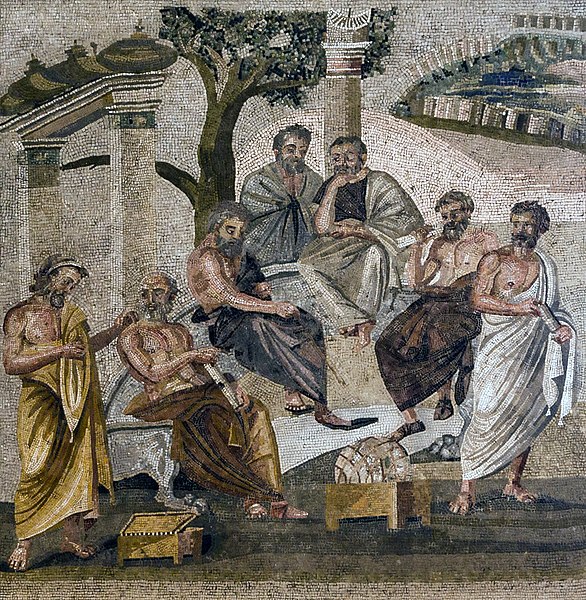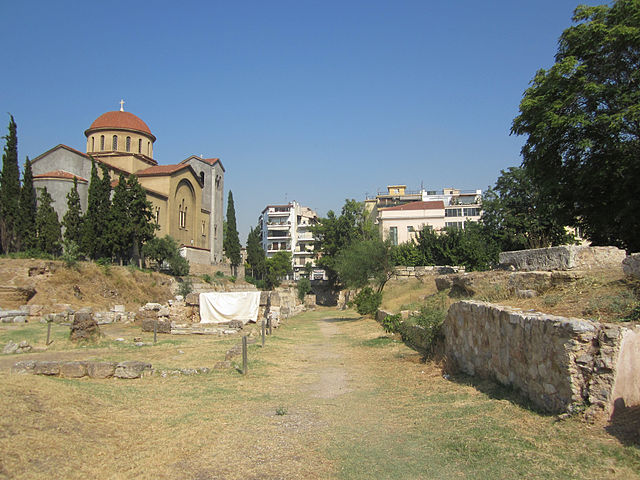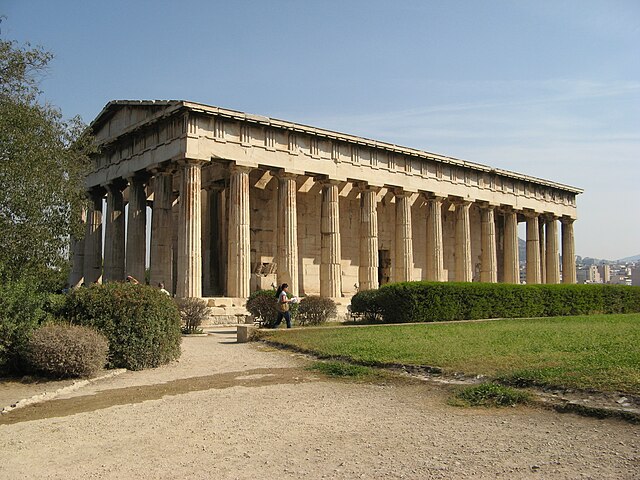The Academy, variously known as Plato's Academy, the Platonic Academy, and the Academic School, was founded at Athens by Plato circa 387 BC. Aristotle studied there for twenty years before founding his own school, the Lyceum. The Academy persisted throughout the Hellenistic period as a skeptical school, until coming to an end after the death of Philo of Larissa in 83 BC. The Platonic Academy was destroyed by the Roman dictator Sulla in 86 BC.
Plato's Academy mosaic – from the Villa of T. Siminius Stephanus in Pompeii.
The School of Athens by Raphael (1509–1510), fresco at the Apostolic Palace, Vatican City.
The archaeological site of Plato's academy.
Ancient road to the Academy.
The city of Athens during the classical period of ancient Greece was the major urban centre of the notable polis (city-state) of the same name, located in Attica, Greece, leading the Delian League in the Peloponnesian War against Sparta and the Peloponnesian League. Athenian democracy was established in 508 BC under Cleisthenes following the tyranny of Isagoras. This system remained remarkably stable, and with a few brief interruptions remained in place for 180 years, until 322 BC. The peak of Athenian hegemony was achieved in the 440s to 430s BC, known as the Age of Pericles.
Early Athenian coin, 5th century BC. British Museum.
The modern National Academy in Athens, with Apollo and Athena on their columns, and Socrates and Plato seated in front.
The Acropolis imagined in an 1846 painting by Leo von Klenze
The Temple of Hephaestus in modern-day Athens








